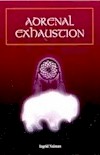.

In older times, it was traditional that when grapes were harvested, people working in the vineyards and wineries not only ate their fill of grapes but often fasted on nothing but grapes for two to three weeks. Many other customs served humanity well until the era of prepared foods and artificial preservation and storage of foods interfered with our synchronization with the seasons. For instance, in late spring and early summer, people might eat dandelion leaves in their salads, thus relieving some of the mucus accumulated during the cold winter months when cheese and beans and other food items with long shelf lives constituted the typical fare. Then, as the summer progressed, the leaves not only grew larger but more bitter and thus became better medicine for the summer heat. People lived in harmony with the rhythms of Nature and often built rituals around the seasonal availability of treasured food items.
Not only do such practices tend to promote an appreciation of the gifts of the Earth, they support physical balance. I was an avid student of Ayurveda during the 80s and immediately grasped the concept of seasonal variations in how the body adapts to climate. I also recognized the merits of changing the menu to fit the cycles of weather and crops.
When developing the material for the Kitchen Doctor lecture series, I researched consumption and discovered that our ancestors a few generations back ingested as much sugar in a year as we currently consume in a month. This is because sugar and salt are used to extend the shelf life of foods that have been robbed of their prana and vital nutrients. Instead, those who eat out of packages attempt to metabolize ten pounds of preservatives per year, one pound of which is generally quite toxic. These are average figures so given that some people are foraging in their own gardens and that food consciousness exists among some people, others are obviously tipping the scales the other direction.
It ought therefore not to surprise anyone that chronic degenerative diseases are an epidemic at this time; but it is heartbreaking to realize that, in America today, approximately 275,000 children under the age of five have arthritis.

It has always been my conviction that towards the end of life, the pieces start to fit together. I wanted to prevent illness due to ignorance and malnutrition and poor sanitation so I became an economist, thinking that if the wheels of progress were set in motion, the other problems could be solved. Then, I abandoned economics for philosophy because the reasons for suffering became more preoccupying than the symptoms. Then, I combined the two through Ayurveda.
As I look out on the world today, I know our civilization is in crisis because no responsible entity can invest in children and their educations and then have adults whose medical issues preclude their ability to pay back society for the investment society made in them. Whether we are talking about AIDS or acute environmental sensitivity or chronic fatigue, no civilization is prepared for losing people in their prime. In all previous times, we could assume that those who survived the early years of life would mature into productive adults. Those who were fortunate would live long enough to retire and enjoy the leisure and nest eggs that had been put aside. Now, we can no longer count on being healthy during the middle phase of life nor of having the presence of mind to enjoy the sunset years. This is a crisis of an enormous proportions.
It occurred to me that we are not taking life seriously. We are not seeing our bodies as organic instruments requiring nutritious food so as to maintain themselves much less as temples requiring periodic purification and restoration. In short, many today tend to take better care of their material possessions than their more important asset, the body in which we live and through which we attempt to express ourselves. How can we "live" if we are in constant crisis or pain? or if our minds are stuck in little grooves where a limited array of memory repeats itself ad nauseam?

So, I came up with a program for the body comparable to schedules we use for routine maintenance of our cars. We are know when we need to fill our gas tanks, i.e., when the fuel gauge is low. However, we tend to feed ourselves according to the clock rather than our appetites, with the consequence that many people are adding food to the stomach before the previous meal has been digested. This is a recipe for trouble.
Likewise, we know we have to change the oil in the car and the various filters, and we plan ahead to change spark plugs, tires, and batteries, but we expect our bodies to run without routine maintenance. If we regarded old oil as comparable to cholesterol and other sludge in the body, then we would realize that periodic flushing is as good for the body as it is for the car. The body also has filters, especially in the kidneys but the lungs and liver perform filtration functions as well. Though we expect sleep to recharge our batteries, sometimes we need a rest from pressure, conflict, stress, and commotion. A weekend might not be enough if we take our work home or spend our days off cleaning the house or garage. Unlike automobiles, humans don't really have replacement parts. Or, sure, we can recycle a heart or kidney by transplanting it into another human, but the immunosuppressive drugs really affect the quality of life.
In order to assure as much health and vitality as possible, I devised a program for tuning up the body that is comparable to the maintenance we provide our other assets and treasures. The logic is so simple that anyone can comprehend the concept; and the program itself is user-friendly enough that most people can apply the concepts without risk and without the assistance of health care practitioners. However, one can always confer with one's health care advisors if in doubt about the suitability of the program to one's own particular needs.

The goal of the mid-life tune up program is to promote optimal functioning of the body. This includes everything from stamina to health as well as the subtleties of acuity, memory, and creativity. We use our bodies to express who we are, not only to perform what is required of us. Thus, the idea is to do our part to assure that our bodies remain adequate vehicles for our expression.
There are two ways to approach the mid-life tune up program. One is to tackle the most dysfunctional systems of the body first. The other is to go from one system to the next in a prescribed sequence. There are also two main parts to the protocol for each system. There is a detoxification component which involves ridding the body of excess: reserves of fat and sugar, mucus and phlegm, bowel congestion, accumulations of unmetabolized food, residues of toxins, and even hormonal trails such as adrenolutin and xenoestrogens. In most cases, the detoxification phase precedes the tonification phase, but when people are very weak due to malnutrition, prolonged illness, or convalescence, they can emphasize the tonification before tackling detoxification.
Most people will find that after the age of 40, it is wise to do the entire mid-life tune up program once every 5-10 years, but some people are telling me that they wished they had started as children. Some people, usually those with chronic weakness or hypofunctioning of a particular system of the body, find that they rely on components of the mid-life tune up program consistently. For instance, people with poor elimination or weak digestion or chronic menstrual discomfort might use parts of the program on a long-term basis even if not depending on the entire program.
I developed the program with the idea that most people would achieve satisfactory results by committing themselves to 2-3 months for each system of the body. However, in the most obstinate circumstances, one system might require much longer, maybe nine months. Therefore, the entire program might take two years or even longer. I realized that this implies a financial commitment, and I tried to keep costs to a minimum and allow for options and alternatives to pills that people could conjure up in their own kitchens. For instance, if people are adrenal exhausted, they could eat the foods that support the kidney-adrenal system or they could take a tablet or tonic. The choice is theirs.
Though not really a very practical person, I tried really hard to keep my feet on the ground so that the program is practical and manageable for others. I also tried to keep focused on the possibility that what is vitally important to one person might not be as relevant to another. Therefore, the provision to skip parts was built into the scheme. Finally, I have tried really hard to forge a body-mind connection so that the underlying reasons for hypo- or hyperfunctioning of a system of the body not only become apparent but the individuals committing themselves to health are provided the insights and tools to shift patterns from dysfunctional to functional. In some case, adjunctive therapies involving emotional and spiritual exploration will enhance the outcome.
Copyright by Ingrid Naiman 2003
.
.



